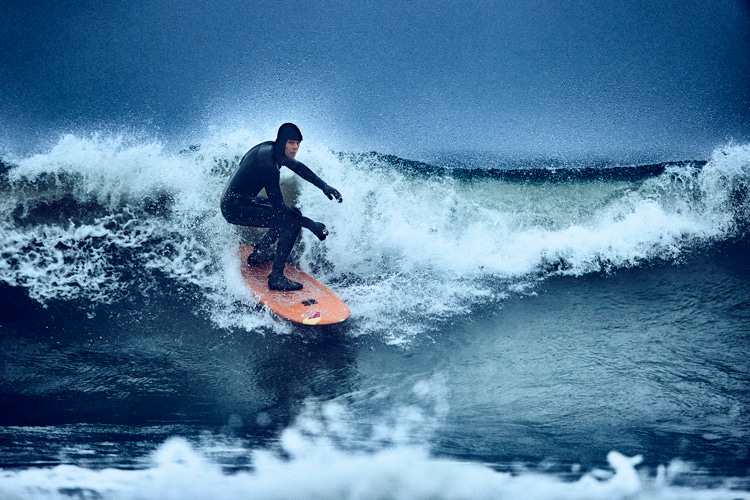Denmark is one of the three Scandinavian nations and probably the best for riding a wave on a surfboard.
The Kingdom of Denmark is divided into five main regions:
- Capital Region of Denmark (DK01);
- Region Zealand (DK02);
- Region of Southern Denmark (DK03);
- Central Denmark Region (DK04);
- North Denmark Region (DK05);
Due to its geographical position in Northern Europe, it is predominantly exposed to North Sea swells.
Its most consistent surfing area is the west coast - DK01, DK02, and DK03 - which also faces the United Kingdom's east coast.
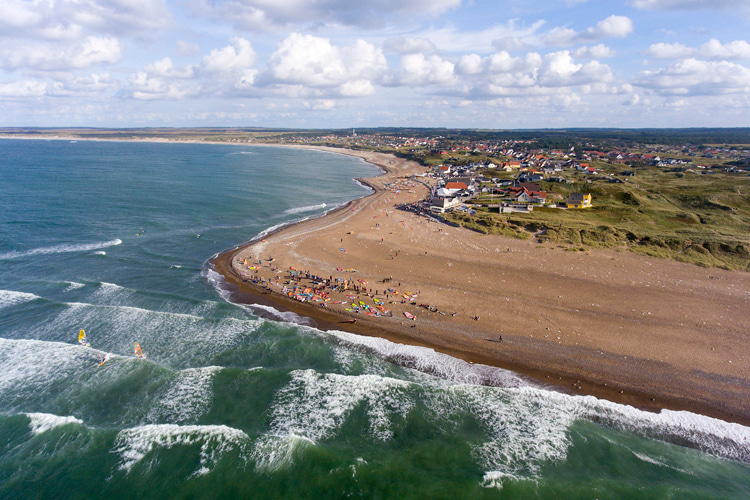
A History of Wind and Then Waves
Surfing in Denmark began around 1980 when windsurfers visiting the west coast found there would often be waves but no wind during the summer.
And that's when longboards began to appear.
Slowly through the 1980s, a few Danes who had lived abroad brought back a surfboard and started exploring the coasts.
"Native-born Rolf Erikson began surfing Denmark's frigid North Sea waters in 1986 and was joined the following year by Reimer Hansen," notes Matt Warshaw in "The Encyclopedia of Surfing."
"They rode the north shore of Sjaelland Island alone for two years before anyone else followed them into the lineup."
Until recently, most Danish surfers started surfing while studying or living abroad in warmer climates.
These travelers were almost exclusively city surfers from Copenhagen, Helsingor, and Aarhus.
Now, a new generation of homegrown talent is learning on Danish waves, hailing from towns near Klitmøller and Hvide Sande.
It can be crowded at certain spots during the warmer months, especially in Nr. Vorupør, a favorite long-stay spot for German campervans.
There are a few surf shops nationwide, and rental boards and small surf schools are becoming more common.
Despite being a relatively new sport, the country has steadily witnessed a growing number of active, regular surfers along the 5,440 miles (8,750 kilometers) of coastline, including the 444 islands.
The Danish Surfing Association was formed in 1995, and the first national championships got underway one year later.
Most swells occur from September to April, with the prime autumn months of September to November bringing the best waves to the west coast.
Winter brings cold, near 39 °F (4 °C) water and short daylight hours, but more 6/4 mm neoprene surfers are braving the conditions to score the stronger waves.
Summer can be really good, depending on the wind patterns, and a 3/2 mm wetsuit works in the warmest months for 63 °F (17 °C) water.
Swells are fewer, but the W wind often provides a good rideable wind chop.
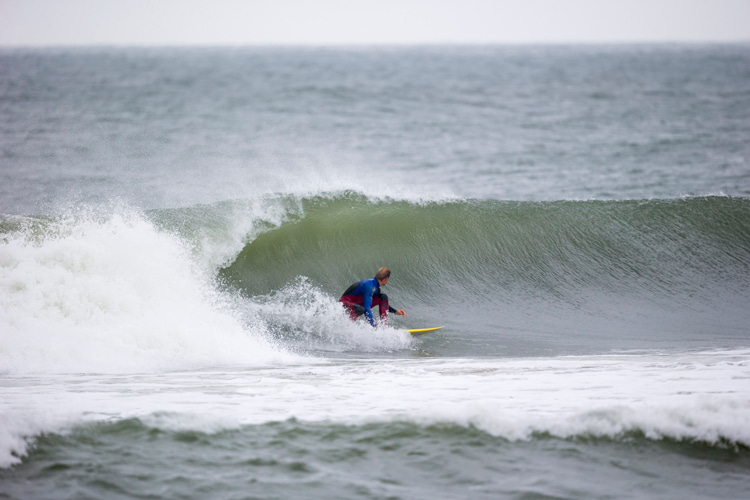
The North Sea Influence
The North Sea has a narrow, long-distance ground swell window and instead relies on short fetch wind swell for much of its wave action.
These swells can appear from almost any direction but are usually accompanied by the onshore winds that created them.
When winter storms cross Britain, the SW winds continue into the North Sea to whip up swell for Denmark, Germany, The Netherlands, and Belgium, while British North Sea surfers hope for the rare NE-SE winds to send a short swell.
Summers are often flat.
However, autumn lows that track between Iceland and Scotland first send westerly swells to Norway, then hopefully stall off the Scandinavian coast, pushing NW-N swells down to the North Sea nations and the east coast of Britain.
A blocking anticyclone will send more low-pressure systems up north, so the North Sea is often pumping when the Atlantic is suffering from small swells.
Baltic Sea nations hope these Atlantic lows continue their journey and blow long and hard enough for some short fetch wind swell in the eastern Baltic.
Surfing in Denmark
Denmark is battered by fierce westerly winds all year round, and these winds can throw up some head-high waves in half a day.
As a result, this Scandinavian nation is home to a prolific and vast community of kiteboarders and windsurfers.
The Jutland coastline - Denmark's continental region - of small bays and long rock groins helps clean up the surf nicely, but expect messy onshores and all swells to come and go quickly.
DK05
The best area is the stretch of beach breaks from the mussel-covered reef in Klitmøller to Agger, with the popular Nr. Vorupør situated in the middle.
Good wind swell can be ridden in breezes from S to NE, and the coast is well exposed to occasional ground swells from the SW to NW.
DK04
It's less consistent, and there's less protection from the wind heading south towards Hvide Sande, but E winds will bring semi-hollow, clean conditions.
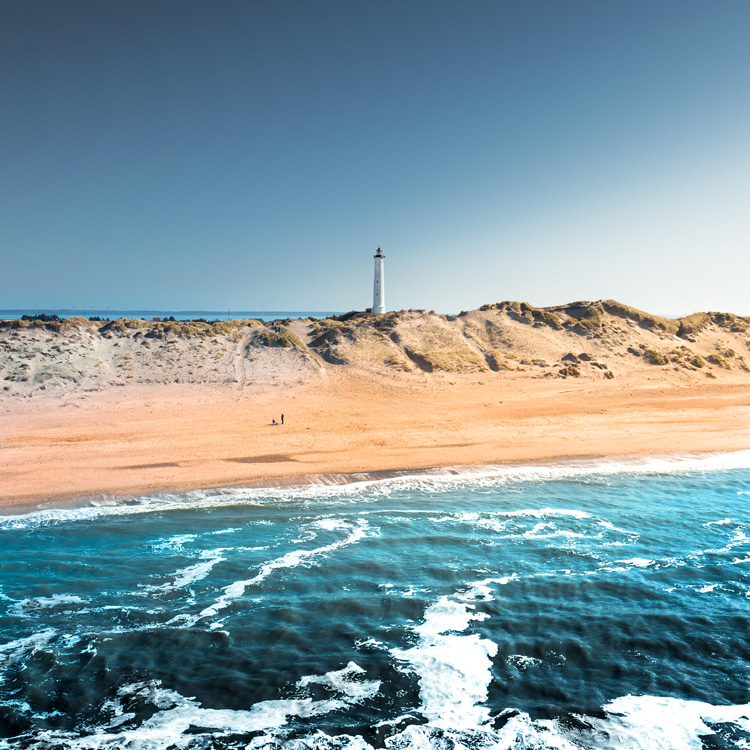
DK01
The Kattegat is the closest place to surf from Copenhagen.
It works mainly in autumn northerlies, but wet summers can also bring many messy W wind days.
Spring is often a good time for strong E winds in the Baltic after the ice melts.
Also, it takes at least six hours of 15 meters per second W or NW winds to kick up some autumn waves to ride between Gilleleje and Aalsgaarde on Zealand's north coast, while Hundested and Liseleje need N/NE.
DK02
It's often during spring when strong E winds blow for at least eight hours, and the Baltic Sea can be surfed around Stevns Klint and in front of the harbor wall at Rødvig.
Other areas with potential include Møn to the south, but the best Danish Baltic waves are on the island of Bornholm.
Parts of the Danish-administered Faroe Islands have been explored.
But the sheer sea cliffs and inhospitable nature of the environment mean most sessions occur in the north at Tjørnuvík, where a barreling left and wedgy right-hander grace each end of the deep sheltered cove.
It's also good to know that the country's entire coastline is public, and the only places with difficult access are a few areas on the west coast where the roads do not go close to the shore.
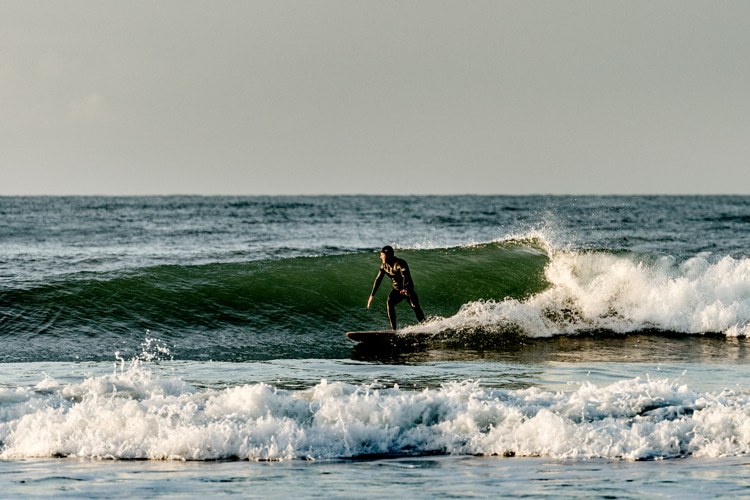
Klitmøller: The Danish Surf Town
Its nickname, "Cold Hawaii," says it all.
Klitmøller is the epicenter of surfing - and water sports in general - in Denmark. The town breathes wind and wave riding.
With its mussel-encrusted reef, the spot shines to life with light or east winds and WSW swells.
The fishing village in the Thy National Park is protected by SW winds and can get crowded, especially if it's windy enough to gather the local windsurfing and kitesurfing crew.
The break provides workable left-handers with decent-looking walls and some nice peeling right-handers.
Cold Hawaii features 31 surf spots from Agger Tange in the south to north of Hanstholm. Its main waves are The Bay, Inside Reef, and Bunkers.
Bibliography and References:
B. Sutherland and A. Colas. "The World Stormrider Surf Guide," Low Pressure Publishing, 2018
